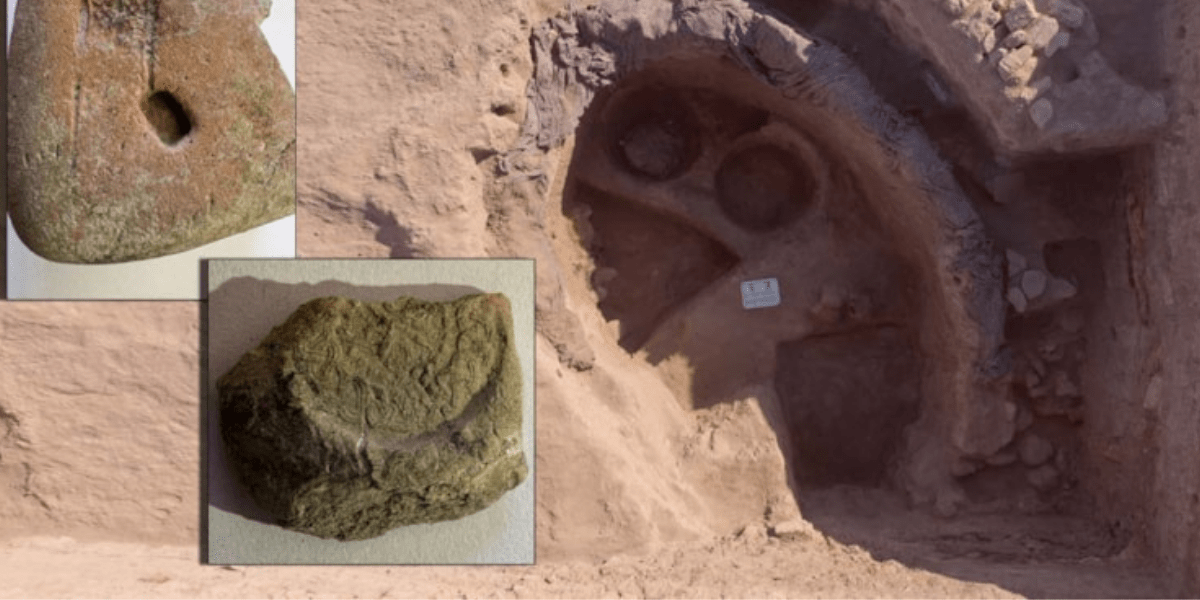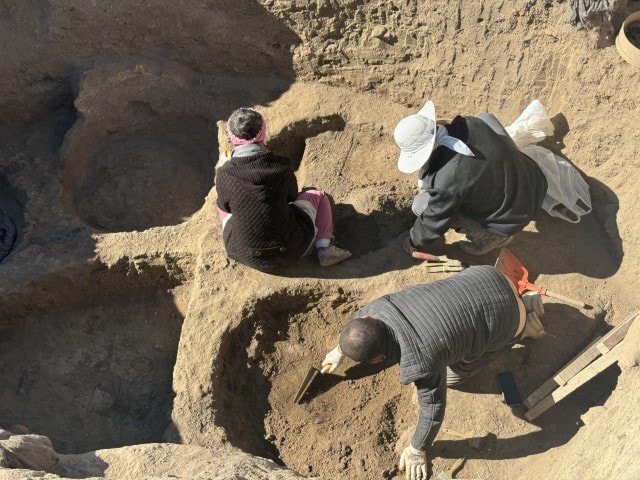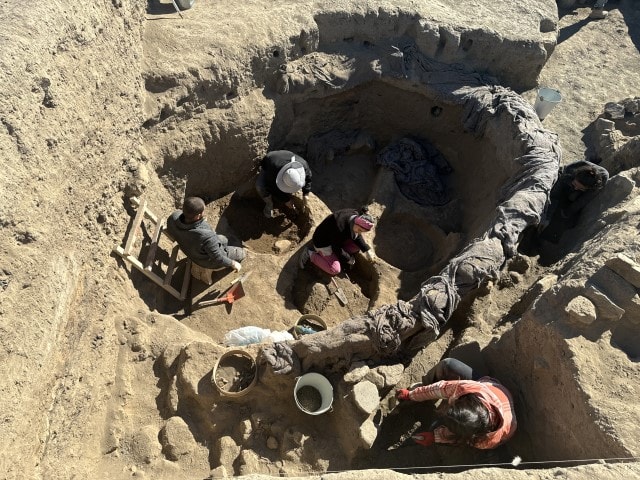
A double-headed eagle seal was found during the Üçhöyük excavation, which is being conducted to locate the lost city of Purušhanda
In the Üçhöyük excavation ongoing in Bolvadin district of Afyonkarahisar, with the participation of Japanese scientists, two different seal impressions were found, including a grain silo and one featuring a double-headed eagle, in the search for the lost city of Purušhanda.
The Üçhöyük excavations are being conducted under the scientific consultancy of Prof. Dr. Özdemir Koçak, a faculty member of the History Department at Selçuk University, in coordination with the Afyonkarahisar Museum Directorate. The excavations have been ongoing since 2020 with a large scientific team.

So far, the excavation work has uncovered commercial seals, textile products, ceramic remains, and some sections of walls.
In this year’s excavation work, which also involved Japanese scientists, a large portion of a pithos (storage jar) was found, along with two different seal impressions, one of which features a double-headed eagle, in a damaged grain silo.

Prof. Dr. Özdemir Koçak stated that they have reached an elliptical silo area in the region they refer to as Kuzeytepe in Üçhöyük. He said, “We encountered large jars here. For the first time, we have come across evidence related to agriculture and production. The findings also strengthen our belief that this area was a public place. We had production-related findings in previous years as well. Perhaps we will discover other areas related to production. This silo is a large pit dug into the ground, approximately 5-6 meters long and 3-4 meters wide. We expect to find 5-6 pithoi placed here. We have not fully determined this yet; we are still working on it. These jars likely contained materials related to grain. We expect to find evidence related to provisions as well. We will also conduct dating on these findings.”
The uncovered silo, along with the seals and seal impressions, is indicative of the fact that the Üçhöyük settlement served as an administrative center.

Koçak stated, “These findings demonstrate the power, status, and position of the Üçhöyük settlement. They indicate that there was a significant city in Anatolia during the 1600-1700 BC period. The seal impression we found was used around the pithos or for its closure. This is an interesting example, featuring a double-headed eagle motif. We also discovered cylinder seal impressions and other materials.”
The Provincial Director of Culture and Tourism, Yusuf Altın, stated, “These jars contain sandy soils. Scientific studies are ongoing on them. Looking at the flow of history, if a written document or tablet comes from the excavation at Üçhöyük, scientific evaluations will be made regarding the possibility that this area could be the Kingdom of Purušhanda. If we reach this data, we believe that Afyonkarahisar will make a significant impact in the world.”
You may also like
- A 1700-year-old statue of Pan unearthed during the excavations at Polyeuktos in İstanbul
- The granary was found in the ancient city of Sebaste, founded by the first Roman emperor Augustus
- Donalar Kale Kapı Rock Tomb or Donalar Rock Tomb
- Theater emerges as works continue in ancient city of Perinthos
- Urartian King Argishti’s bronze shield revealed the name of an unknown country
- The religious center of Lycia, the ancient city of Letoon
- Who were the Luwians?
- A new study brings a fresh perspective on the Anatolian origin of the Indo-European languages
- Perhaps the oldest thermal treatment center in the world, which has been in continuous use for 2000 years -Basilica Therma Roman Bath or King’s Daughter-
- The largest synagogue of the ancient world, located in the ancient city of Sardis, is being restored











Leave a Reply